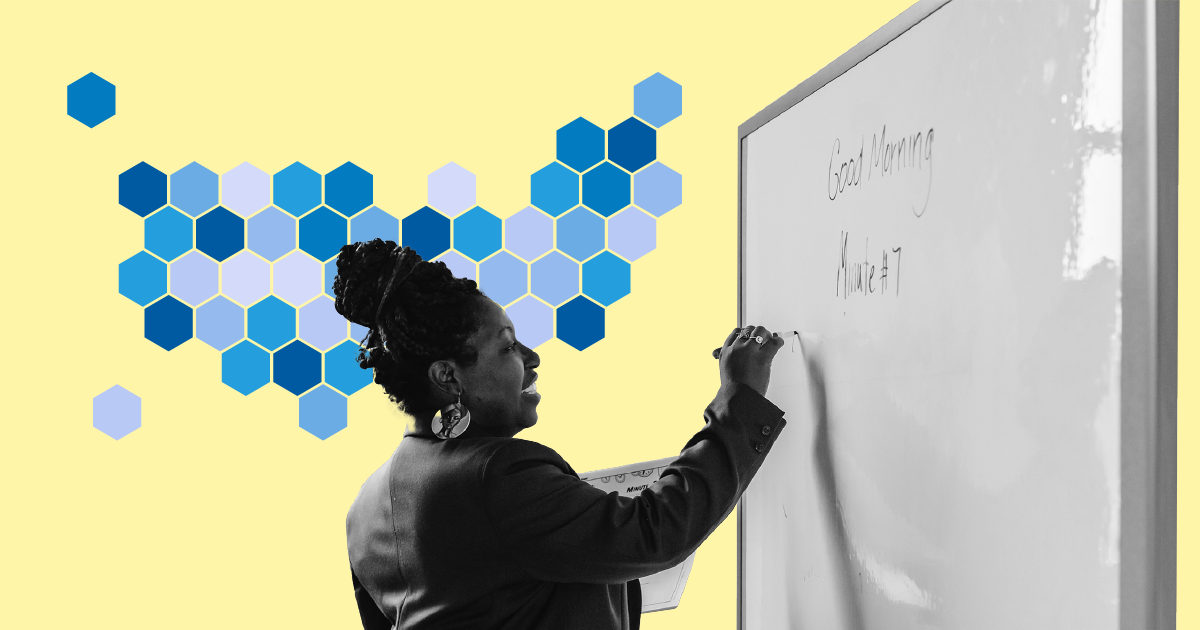Education
Which states pay teachers the most and least?

In the United States, when employees or their family members get sick, they often have the option to take one of two types of leave. There is sick leave for short-term health needs. There is also what is known as family and medical leave, usually reserved for extended absences related to health needs. While federal law requires these provisions to be available for certain workers, there is no federal law requiring that workers be paid during the leave. Some states mandate that employers provide paid leave depending on the business, but they are in the minority.
Fourteen states and Washington, DC have paid sick leave policies, each with a different set of requirements. In Oregon, for example, employees get one hour of protected sick time for every 30 hours worked. These employees can earn up to 40 hours of sick time under the law. Paid sick time is guaranteed if the employer has more than 10 employees, otherwise sick time may be unpaid.
In Maryland, employers with 15 or more employees must provide paid sick leave. Those with fewer employees must provide unpaid sick leave.
Meanwhile, full-time federal government employees accrue four hours of paid sick leave every two-week pay period.
The Family and Medical Leave Act (FMLA) of 1993 is the key piece of federal legislation applying to family and medical leave. Under the FMLA, eligible employees are entitled to 12 work weeks of leave in a 12-month period for serious health emergencies of their own or a family member, birth and care of a newborn, adoption or fostering of a child within a year of placement, or an emergency associated with a family member’s active military duty. Additionally, those whose spouse, child, parent, or next of kin is seriously injured while on active military duty are eligible for up to 26 weeks of FMLA leave during a single 12-month period.
FMLA applies to private companies employing more than 100 people, government agencies at all levels, and K-12 schools both public and private.
However, the FMLA does not require paid family and medical leave. According to Bureau of Labor Statistics (BLS) data from March, 89% of workers had unpaid family and medical leave, while 21% had paid family and medical leave.
In the absence of a federal requirement that employers provide paid family and medical leave, eight states — California, New York, Rhode Island, New Jersey, Washington, Connecticut, Oregon, Massachusetts — and Washington, DC either have implemented paid medical leave policies or plan to.
The Families First Coronavirus Response Act (FFCRA), passed in March 2020, created new temporary leave benefits for eligible employees as a response to the pandemic. Under the FFCRA, full-time employees were entitled to 80 hours of paid sick leave while quarantining, experiencing COVID-19 symptoms, or upon receiving a positive COVID-19 diagnosis. The act also provided paid sick leave at two-thirds of the regular rate of pay for people caring for someone with coronavirus-related health issues. Employers with employees using these benefits earned tax credits.
The act also allowed for 10 weeks of paid family and medical leave at two-thirds the rate of pay for employees who could not work for at least 30 days while caring for a child whose school or child care provider was unavailable due to the pandemic.
Part-time employees — people employed for fewer than 40 hours per week — were entitled to the equivalent of two weeks of paid sick leave.
FFCRA provisions expired on December 31. The December stimulus bill did not include an extension.
By March 2020, before the passage of FFCRA, 78% of civilian employees got paid sick leave, according to data from the BLS. Generally, white-collar workers had greater access to paid sick leave than service, construction, or agriculture workers. Ninety-three percent of unionized workers had access to paid sick leave compared with 75% of non-union workers.
Eighty-six percent of full-time private industry workers had access to paid sick leave, compared to 99% of full-time state and local government workers. Within the private sector, access to paid sick leave was highest among full-time workers in management, professional, and related occupations. Of these workers, 92% had access to paid sick leave. Among full-time workers, access was lowest for construction and agriculture workers, only 57% of whom receive paid sick leave. Among part-time private-sector employees, 45% had access to paid sick leave.
The data also reveals regional differences in paid sick leave. Western states had the highest percentage of workers with paid sick leave access at 88%, while Southern states had the lowest at 68%.
The COVID-19 pandemic has led to some voluntary changes or expansions of paid medical leave. According to BLS survey data, 25% of employers created or modified existing paid sick leave or paid time-off plans between March and May of last year. Among these employers, 34% added one to five paid days, 34% added six to 10 paid days, and 37% added more than 10 paid days.
Among companies with 100 or more workers, it was most common to add six to 10 days of paid days: 61% of companies did so. Among companies with one to 99 workers, 39% added more than 10 days and 37% added one to five days.
Learn more from USAFacts and get the data directly in your inbox by signing up for our newsletter.
Newsletter
Keep up with the latest data and most popular content.